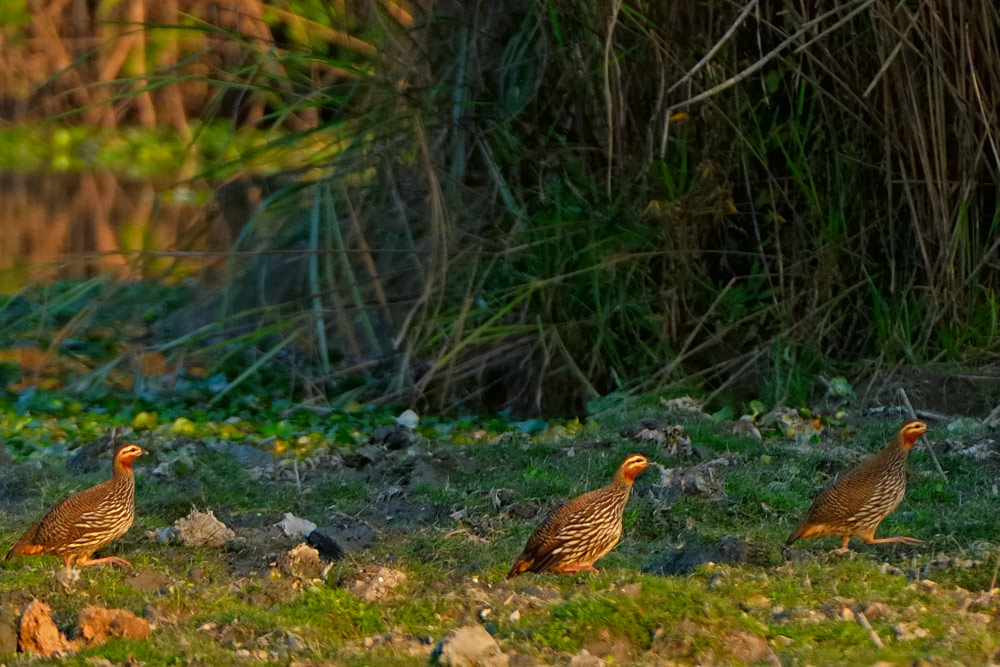 "
"
I thought of sharing an image I made of Swamp Francolins from the western zone of Kaziranga National Park and Tiger Reserve in Assam. The image was made in the afternoon safari during late December 2015. I was excited about spotting a rare species like this — we actually saw a family of six but I managed to capture only three in this frame.
As the name implies, this is a bird of swamps and damp areas, but it is doubtful if it ever goes into the water. Its specialised habitat, called the terai in north India and Nepal, extends from north Pilibhit district in Uttar Pradesh, to West Bengal. It is also found in the Brahmaputra floodplains in Assam. Significant populations reported from outside protected areas in Assam in the 1990s (Choudhury 2000) have virtually vanished in recent years due to conversion of habitat into farmland (A. Choudhury in litt. 2012). It was found in Bangladesh, but there are no recent records. Based on the decline of its specialised habitat during the last 40–50 years, which is projected to continue, concurrent with the rapid decline in the quality of its habitat, and hunting/trapping pressures, BirdLife International (2001, 2011) considers it Vulnerable. Although it is very difficult to say how many birds are surviving, their numbers could be anywhere between 10,000 and 20,000.
Vanishing grasslands in the terai and hunting are the major threats to this species. Hunting and trapping for sport (cock fighting), food and the aviculture trade also occur (A. Rahmani in litt. 2012). Most of the remaining habitat within its range is subject to intense pressure from drainage for agriculture, human encroachment, fire, grass harvesting, grazing by domestic stock (especially during chick rearing), commercial forestry plantations and dams and irrigation schemes.
Kaziranga is one of the strongholds of the species.
References:
- Threatened Birds of India, Author: Asad Rahmani
- BirdLife Species Factsheet.

 CI is a non-profit, non-commercial portal that aims to facilitate wildlife and nature conservation by providing reliable information and the tools needed to campaign effectively.
CI is a non-profit, non-commercial portal that aims to facilitate wildlife and nature conservation by providing reliable information and the tools needed to campaign effectively.



Chosen as 'Picture of the Week'
Most remaining habitat of the Swamp Francolin is subject to intense pressure from drainage for agriculture, human encroachment, fire, grass harvesting, grazing by domestic stock (especially during chick rearing), commercial forestry plantations and dam and irrigation schemes.